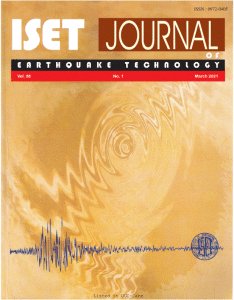Home > Issues & Journals
Liquefaction mitigation measures of fine sand using cement grout under cyclic loading
Arpit Jain, Satyendra Mittal and Tshering Cheki
Paper No.: 555
|
Vol.: 57
|
No.: 2
|
June, 2020
|
pp. 87-101

Abstract
The liquefaction phenomenon has been widely discussed and investigated due to its devastating outcomes. The triggering of liquefaction can be delayed through the significant ground improvement techniques like use of nano materials, epoxy impregnation, binder material etc. One the most effective, less costly and locally available OPC 43 (ordinary portland cement) can be tremendously helpful in the mitigation process for small to big projects of geotechnical engineering. The present study aims to observe the deformation characteristics of fine sand in terms of generated pore pressure, shear modulus and deviator stress at significant points. Twelve nos. strain controlled undrained cyclic triaxial tests were performed on both the non-grouted and cement grouted fine sand for the comparison. The tests conducted on fine sand treated with OPC 43, indicated that there is reduction in excess pore water pressure and enhancement of the stiffness degradation parameter. The tests were performed at two different relative densities of 35% and 65%, replicating loose and medium dense specimens, respectively. It has also been observed that after cement grouting, the number of cycles to reach initiation of liquefaction increased from 15 to 26.
Keywords: Liquefaction, Cyclic loading, Cyclic triaxial test, Cement grouting
©2025. ISET. All Rights Reserved.